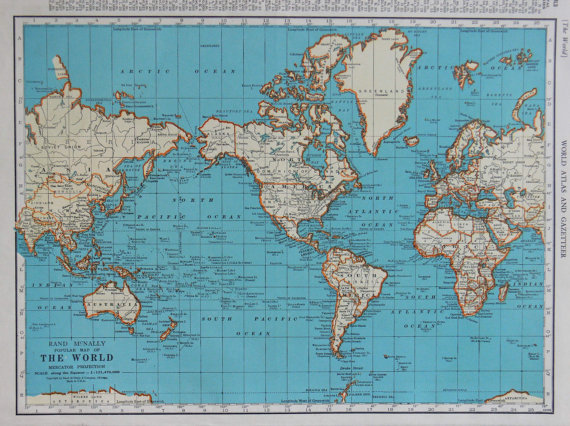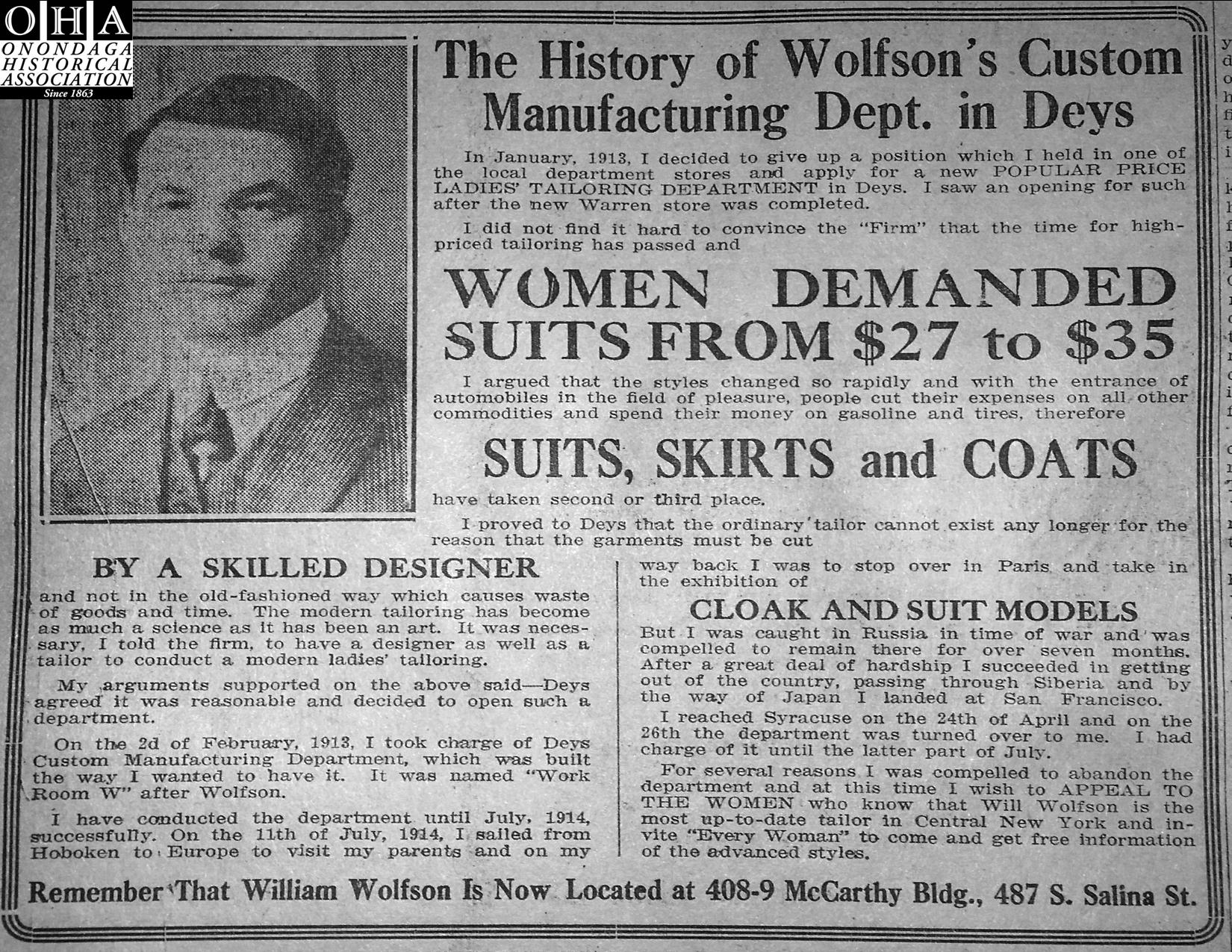
The Long Journey Home
By Lynne Pascale
The April 25, 1915 Syracuse Herald declared that a resident of Syracuse, William Wolfson, 26, was “Forced to Circle Earth in Order to Get Home.” The events described by the paper had unfolded several years before the United States entered the conflict known as the “Great War” (World War I) and began while Wolfson was on a visit to Russia in 1914 to attend his sister’s wedding. Caught at the outbreak of hostilities, Wolfson’s friends and family in Syracuse did not know his fate for many months.
This story came to OHA’s attention when Howard Silverman of Bloomfield Hills, Michigan contacted us with information he had discovered while researching his family history in Syracuse. William (Bill) J. Wolfson (1888 – 1970) was Mr. Silverman’s great-uncle and a tailor in business in Syracuse with Mr. Silverman’s grandfather, Harry Wolfson, who arrived in 1904. Bill had arrived in Syracuse in 1908. In a series of newspaper articles in the Syracuse Herald in 1915, Wolfson recounted the details of his odyssey.
Before immigrating to the United States from Russia, Bill had promised his younger sister, Sarah, that whenever she became engaged, he would return for her wedding. Six years later, despite war clouds gathering, Wolfson kept his promise and crossed the Atlantic to go back to Europe in July of 1914, traveling to the Russian city of Vitebsk in Belarus (near Lithuania and Latvia) by way of Paris, Germany and Poland. Bill was 5 feet, 11 and one-half inches tall with brown hair and blue eyes, according to his passport application. Eight days after Wolfson arrived in the city of his birth, Russia declared war against Germany. The western borders through Germany were closed, and all men of fighting age were required to register for the Russian military draft.
For nine months, Wolfson didn’t return home while his family and friends in Syracuse wondered and worried about his fate. Some were concerned that he hadn’t become a U. S. citizen before going back and would be forced into the Russian Army.
In Vitebsk, Wolfson and his Russian family were also anxious that Bill might be forced into service. He was a U. S. citizen, but that apparently didn’t lessen the risk. Sarah never had her wedding as the bridegroom was conscripted into service along with two of his brothers. 3,000 men from Vitebsk were quickly mobilized and sent to the front on August 6, 1914. All newspapers along with the mail were heavily censored. Communications were cut. The ban on vodka sales was a wartime hardship for some Russians. Bill stayed in his parents’ house for six months, only occasionally going out to visit other areas. In the Herald, Wolfson was quoted as saying “it was a pitiful as well as a splendid sight to see soldiers marching off to war. The old people and the women were heart broken. Some of the old men knew what it meant and they wept like children. For the children it was a gala day.” Any war euphoria, as always, quickly turned. Wolfson “saw thousands and thousands of wounded Russian soldiers. Every city in Russia is one great hospital…”
When it became clear that Wolfson was trapped and couldn’t return via a western route, he instead chose to make his way east across Russia, traveling 7,000 miles by train from Moscow to Vladivostok, by boat to Japan, by train to Yokohama, and then by ship to Honolulu, finally arriving in San Francisco on April 12, 1915 on a vessel named, appropriately, S.S. Siberia. Wolfson sent a telegram back to Syracuse stating that he was back in the States and would be home shortly.
A journey and visit that should have taken a few months turned into a nine month odyssey for the young tailor, who happily was back in Syracuse before long. By September of 1915, he was advertising for Wolfson’s Custom Manufacturing Department in Dey Brothers department store. In 1918, Bill and his brothers Harry and Louis both registered for the draft, with Bill’s address as Almond Street and Harry’s as Cedar Street, both in what was known as the 15th ward.
Interestingly, appearing at the bottom of the same page as the “Forced to Circle the Earth” article in the April 25, 1915 Syracuse Herald, is an advertisement for the May 1 sailing of the RMS Lusitania from New York City. This turned out to be the last voyage for that luxury liner, which was torpedoed and sunk by a German U boat on May 7, 1915, further encouraging the voices calling for the United States to declare war on Germany and testing Woodrow Wilson’s support of neutrality. It wasn’t until April 6, 1917, almost three years after Bill Wolfson made his trip to Vitebsk, that America entered the Great War.
Many people in the 19th and early 20th century, like Bill Wolfson – who traveled west across the Atlantic, leaving behind turmoil or lack of opportunity in the lands of their birth – were able to make a new home for themselves here in central New York. Many who came had family back in the old country and were inevitably impacted by the war’s scale of destruction, the loss of life and health, as well as assets and infrastructure. During the Second World War, the city of Vitebsk, also the birthplace of artist Marc Chagall, continued to see wartime tragedy when over 4,000 Jewish residents were executed by Nazi occupiers in October of 1941. Some of those who perished were undoubtedly relatives and friends of the Syracuse tailor, Bill Wolfson.


